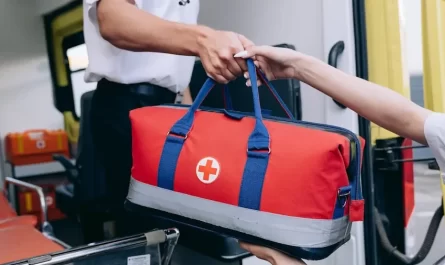A Traveler’s Guide to Protecting Fragile Items in Flight
For flying with fragile items, use secure packing, check airline handling policies, and follow check-in steps. Protect your valuables to ensure they travel safely.
Contents
Traveling can be an adventure filled with excitement and discovery, but it can also pose a challenge when it comes to transporting fragile items. Whether you’re a seasoned globe-trotter, an art collector on the move, or simply bringing back a delicate souvenir, ensuring your fragile items survive the flight is paramount. Fear not, fellow enthusiasts of the well-packed suitcase!
You don’t have to be a seasoned traveler to know the difficulties that come with packing delicate items in your luggage. Many of us have faced the disappointment of finding a cherished item broken or damaged upon opening our suitcase. Yet, this unfortunate event shouldn’t discourage you from picking up that special souvenir for your sister or the delicate gift your nephew requested from your travels.
Navigating the packing of fragile items might seem daunting, but it’s definitely doable. With a bit of care and adherence to several essential packing strategies, ensuring the safe transport of your fragile belongings becomes a much simpler task.
In this article, we’re diving into the art of packing fragile items for flying, ensuring they arrive at your destination as intact as your wanderlust spirit.
Do airlines take care of fragile items?
Airlines do recognize the need to handle fragile items with care. However, the extent of this care can vary widely between different carriers. Most airlines will allow you to label your luggage as fragile, which ideally should signal baggage handlers to treat it with more care. Some airlines might offer special handling for fragile items, but it’s important to note that this does not guarantee your item will be immune to the usual risks associated with checked luggage. The best approach is to pack your fragile items according to airline guidelines and consider carrying them as hand luggage if their size permits.
Does airlines charge extra for fragile items?
Generally, airlines do not charge extra specifically for checking in fragile items unless the item requires special handling beyond what is typically offered for checked baggage. If your fragile item exceeds the airline’s size or weight limits for checked luggage, you might incur additional fees. It’s always a good idea to check with your airline beforehand to understand their policies on fragile items and any potential costs involved in transporting them.
How do you check in fragile items at the airport?
Checking in fragile items at the airport requires a bit of preparation:
- Pack Wisely: Ensure your item is well-protected within your suitcase using bubble wrap, packing peanuts, or foam. Place it in the center of your suitcase surrounded by soft items for extra cushioning.
- Label as Fragile: Mark your suitcase as “Fragile” using bright, easily visible labels. While not all baggage handlers may heed these labels, it’s still worth marking to increase the chances of gentler handling.
- Notify the Check-in Staff: When you check in your luggage, inform the staff that your suitcase contains fragile items. Some airlines might offer to place a fragile sticker on it, and while this is not a foolproof protection, it is beneficial.
- Consider Special Handling Services: Ask if the airline offers any special handling services for fragile items. There may be an additional fee for this service, but it could be worth the cost for particularly valuable or delicate items.
- Explore Insurance Options: For high-value fragile items, consider purchasing travel insurance that covers damage to checked luggage. This can provide financial protection in case your item is damaged during transit.
Remember, the safest way to transport fragile items is by carrying them with you in your carry-on luggage, if possible. This gives you control over how the item is handled throughout your journey.
Step by Step Guide to Protecting Fragile Items
Start with the Right Materials
Before anything else, gathering the right packing materials is crucial. Invest in high-quality bubble wrap, packing peanuts, foam pads, and sturdy boxes. These materials will be the first line of defense against the bumps and shakes of travel.
Choose the Right Box
When selecting a box, size and sturdiness matter. The box should be large enough to accommodate your item and all the protective materials around it but not so large that the item has room to move. Double-walled boxes offer extra protection for particularly fragile or valuable items.
Wrap Items Individually
Each fragile item should be wrapped individually in bubble wrap, securing the wrap with tape. Pay extra attention to protruding parts and edges, as these are more prone to damage. For extra delicate items, consider using foam pads as an initial layer before wrapping in bubble wrap.
Fill the Gaps
Once your item is securely wrapped, place it in the center of your box, and fill all surrounding spaces with packing peanuts or crumpled paper. This prevents movement inside the box and acts as a shock absorber during transportation.
Seal and Label the Box
After packing the box, seal it securely with strong packing tape. Reinforce the corners and openings to ensure the box holds up. Clearly label the box as “Fragile” on multiple sides to alert handlers to the need for careful handling. Consider adding “This Side Up” arrows for items that must be kept in a certain orientation.
Choose Your Transport Method Wisely
When flying, you generally have two options: checked luggage or carry-on. Whenever possible, keep fragile items with you as carry-on luggage. This allows you to control the handling and placement, minimizing the risk of damage. If the item must be checked, inform the check-in staff that the luggage contains fragile items. Some airlines offer special handling for such cases.
Insure Your Items
For peace of mind, consider purchasing travel insurance that covers the value of your fragile items. In the event of damage, having insurance can help recoup losses and alleviate the frustration.
Practice and Patience
Packing fragile items is an art that benefits from practice and patience. Don’t rush the packing process; taking the time to pack carefully can be the difference between a piece arriving in one piece or in pieces.
Packing fragile items for flight requires foresight, the right materials, and a gentle touch. By following these steps, you’re not just packing your belongings; you’re ensuring that the memories and value they hold remain intact. So go ahead, embrace the adventure of travel with the confidence that your fragile treasures will arrive safely, ready to add to your collection of experiences and memories. Safe travels and may your packing skills be as robust as your spirit of adventure!
Tips for Packing Fragile Items in Your Suitcase
Baggage RulesCan I have a carryon and a backpack and a purse?
Can I carry nail clippers on a plane?
What makeup items are not allowed on planes?
Are shaving razors allowed on plane?
Can you take shampoo and deodorant on a plane?
Can you knit or crochet on an airplane?
Does Airport Security Flag Tampons?
The TSA 3-1-1 Rule: Airplane Liquid Limits & Restrictions
Airport Security and Vibrators
What makeup does TSA consider liquid?
Flying with Musical Instruments
Are children’s toy guns allowed on a flight?
Can I Trust My Bathroom Scale for Weighing Luggage
Do I have to take out my piercings for airport security?




